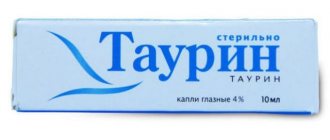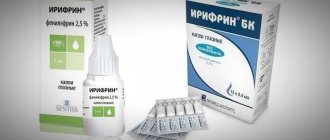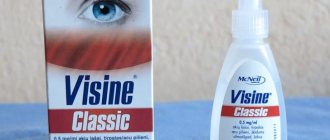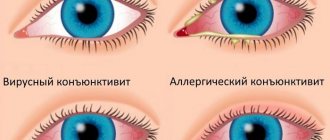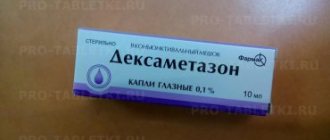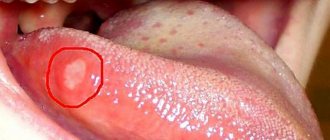CREATE NEW MESSAGE.
But you are an unauthorized user.
If you have registered previously, then “log in” (login form in the upper right part of the site). If this is your first time here, please register.
If you register, you will be able to further track responses to your messages and continue the dialogue on interesting topics with other users and consultants. In addition, registration will allow you to conduct private correspondence with consultants and other users of the site.
Register
Create a message without registration
Write your opinion about the question, answers and other opinions:
Visual impairment can occur in absolutely any person, both due to direct mechanical effects on the organ, and as a symptom or complication of the disease. This state of affairs cannot but frighten, because everyone is afraid of losing such an important sense organ. Therapy for a specific local problem is carried out through the use of special eye drops, which, when used correctly, can most actively affect the condition of the eyes. Let's consider the drug in the form of Emoxipin eye drops, which has a wide range of applications.
Composition of Emoxipin
| Eye drops | Antihypoxant solution | |
| Description | Transparent colorless liquid | |
| Concentration of ethylmethyloxypyridine hydrochloride, g per ml | 0,01 | |
| Auxiliary components | Purified water, sodium sulfite anhydrous, disodium phosphate dihydrate | |
| Package | Ampoules of 1 or 2 ml, 5 pcs. in a pack with instructions for use | 5 ml bottles with pipette |
Emoxipin is available in convenient 5 ml dropper bottles.
The medicine contains a one percent solution of methyl ethyl pyridonol, which is an active substance that normalizes the condition of the walls of the blood vessels of the eyeball.
The shelf life of the medicine in sealed form is two years. It is important for the consumer to know this so as not to purchase an expired product, so at the time of purchase you should always look at the manufacturing date.
Once opened, emoxipine can be stored for no more than a month, like all ophthalmic drops.
However, you should not make the common mistake of keeping the drug in the refrigerator, hoping that this will prolong its properties.
The drops must be kept in a dry place where the temperature does not exceed 25 degrees and provided that the bottle is not exposed to direct sunlight.
Keep in mind! You should not save money and use drops that remain in the bottle after thirty days - such a product must be disposed of, especially since the cost of emoxipine is very low.
The ophthalmic drug Emoxipin is a single drug and consists of methylethylpyridinol hydrochloride. Despite such a simple composition, the synthetic drug helps to achieve positive results in the treatment of various diseases of the organs of vision.
How to give an injection
Before the injection, the patient is examined for allergies or eye infections.
Emoxipin injections are carried out according to the following stages:
- Anesthesia of the eyeball, since the procedure is characterized by pain.
- Medicine is drawn into a syringe with a thin needle.
- The conjunctiva is punctured approximately 1 or 2 mm when the drug is administered subconjunctivally. With para- or retrobulbar injections, the lower eyelid is pierced by 3 cm or 5 cm, respectively.
- The drug dosage is administered from 0.5 ml to 1 ml.
- After the injection, the patient presses on the cotton wool at the injection site to prevent the formation of bruises due to damage to the capillaries. The manipulation takes no more than 2 minutes.
After the procedure, it is permissible to put on contact lenses after half an hour.
Pharmacodynamics and pharmacokinetics
The angioprotector drug is intended to reduce the permeability of the vascular wall and inhibit free radicals. It also exhibits antioxidant and antihypoxic effects. Emoxipine reduces blood viscosity, platelet aggregation, and increases the concentration of cyclic nucleotides in brain tissue.
The use of an antihypoxic drug helps to dilate the coronary vessels, in case of acute myocardial infarction it prevents necrotic lesions from spreading, and improves the degree of contraction of the heart and conduction system.
With high blood pressure, the drug has a hypotensive effect; in acute ischemic pathologies of the blood circulation of the brain, it reduces the severity of neuralgia, increases tissue resistance to ischemia and oxygen starvation.
In ophthalmology, Emoxipine exhibits retinoprotective properties, helps the retina resist the damaging effects of high-intensity light, resolves intraocular hemorrhages, and increases blood microcirculation inside the eye.
Drops and solution reduce the overall coagulation index, lengthen blood clotting time, stabilize cellular and vascular membranes, increase the resistance (stability) of arterial red blood cells to hemolysis and mechanical injury.
The antihypoxant ethylmethylpyridonol increases the activity of enzymes from the group of antioxidants, has hypolipidemic and cardioprotective properties, and the molecule reduces the synthesis of triglycerides. Taking the drug reduces the manifestations of cerebral hemodysfunction, corrects autonomic dysfunction, the condition of the arteries and muscles.
When Emoxipine is administered intravenously, a low half-elimination rate is observed, the drug is distributed to all organs and tissues and is metabolized. In pathologies of coronary occlusion, the rate of drug elimination decreases, but bioavailability increases.
Release form, main components
The drug Emoxipin is found in pharmacies in 2 forms:
- Ophthalmic drops in the form of a 1% solution of the active substance, ampoules have been replaced by more convenient 5 ml bottles;
- Solutions for injections, which are available in different concentrations: one and three percent. Moreover, the volume of ampoules is also different. Emoxipin is sold in 1 ml doses with a lower content of the active component, and 3 ml with a higher content.
have a protective effect on the retina of the eye, accelerate blood supply to the eye vessels and capillaries. The drug resolves minor hemorrhages and improves resistance to the harmful effects of free radicals.
The medicine also strengthens the walls of blood vessels in the brain and improves blood circulation. After use, improvements in radiological results of blood tests are noticeable. The drug increases the stability of the brain during ischemia or hypoxia, expands the capillaries of the heart and strengthens them.
Compound
Description of the drug: consists of the main active substance and several auxiliary substances. In the composition of Emoxipin eye drops, the main component is emoxipine 10 ml (methylethylpyridinol hydrochloride), auxiliary components are sodium benzoate, sodium sulfite anhydrous, disodium phosphate dihydrate, potassium dihydrogen phosphate, water for injection. All components of the composition work effectively together.
The medicine is available in the form of eye drops and a solution for intravenous drips. For intravenous use, the solution is packaged in sterile ampoules of 5 milliliters; the ampoule has a special cap for intravenous injections.
Emoxipin eye drops are a yellowish or clear solution in a sterile bottle. Localization of the use of drops - behind the eyeball, inside the circumference of the eyeball or under the outer shell of the eye.
The range of recommendations for the use of this drug is wide. Indications for the use of Emoxipin drops are as follows:
- hemorrhages inside the eyeball;
- deterioration of vision and vascular condition due to diabetes mellitus;
- advanced form of myopia or glaucoma;
- treatment of corneal burns;
- thrombosis of the veins of the eyeball;
- cataract;
- eye infections;
- after contact lenses.
In addition to the above recommendations, Emoxipin eye drops are used to protect the eyes from strong light exposure - sunlight or laser. Elderly patients are prescribed drops as a permanent, supportive remedy for the prevention of glaucoma or cataracts, for complications after treatment of myopia and various eye inflammations. Proven compatibility with antibiotics.
Contraindications
Like any medicine, the drug has some contraindications. Emoxipine should not be used if you are hypersensitive to certain components of the drug. It is forbidden to mix eye drops with other products; they should only be used separately.
Before using the drug, the patient should carefully study all destinations. Instructions for using Emoxipin drops are as follows:
- release form - eye drops, intravenous injection solution;
- pharmacotherapeutic group – a drug for the treatment and prevention of eye diseases;
- mechanism of action: the main component acts as an angioprotector, strengthens the vascular wall, resolves hemorrhages.
Pharmacokinetics - the drug does not accumulate in tissues and organs. After use, the concentration in the eyes is much higher than in the blood. During the first 2 hours after instillation, the concentration of droplet components in the blood rapidly decreases.
Interaction of Emoxipin eye drops with other medications is not recommended. If there is a need to use several drugs at once, it is better to instill Emoxipine last.
Dosage
A 1% solution for intravenous injection is administered once every 24 hours for 10 days. Before surgery, the drug is administered 60 minutes before surgery retrobulbarly, then after surgery for 7 days 1 time per day. In ophthalmic practice, drops are used in three ways:
- parabulbar - in the area that surrounds the eyeball;
- subconjunctival - inside the conjunctival sac;
- retrobulbar - to the area behind the eyeball.
Eye drops are instilled into the conjunctival sac, 2 drops 3 times a day. The duration of therapy is prescribed by the doctor; the standard course of treatment lasts up to 30 days, depending on the type and degree of the disease.
During pregnancy
The use of the drug during pregnancy is not recommended. Emoxipine is strictly contraindicated during pregnancy due to the lack of information about the effect of the drug on the body of the mother and fetus. Use while feeding a child is undesirable, but the drug can be used only if the risk of developing the disease is greater than the potential harm of using the drug.
We suggest you read why floaters appear before your eyes during pregnancy
For children
The use of Emoxipin drops for patients under 18 years of age is contraindicated in the official instructions for use. However, if the attending physician was unable to select the appropriate children's analogue of Emoxipin, he may recommend using Emoxipin in a certain dosage for the child.
Side effects
Misuse or overdose of any medicine can have various consequences. Side effects of this drug are as follows:
- after administration of the drug, itching, burning, slight tissue inflammation, and compaction may be felt at the site - over time, the sensations disappear, and the compactions resolve;
- when injecting intravenously, a burning sensation may be felt inside the vein at the time the substance is administered.
The patient's well-being may deteriorate due to increased intraocular pressure; drowsiness or agitation or anxiety are rarely felt. In patients prone to allergic reactions, redness and itching of the skin near the injection site is observed; when injected into the eyeball, the conjunctiva may become inflamed and a feeling of discomfort may appear.
In Russia, Kazakhstan and Belarus, Emoxipin is produced in bottles with a 5 ml dropper. The active component of the clear solution has the same name as the drug. In addition to emoxipine, the medicine contains:
- distilled water;
- sodium - benzoate and sulfite;
- potassium dihydrogen phosphate.
The product is stored in a cool place until the date indicated on the package, if opened - for a month.
Instillation is performed into the conjunctival sac. The medicine is instilled into the membrane that is located around or behind the eyeball. The procedures are performed three times a day. The course of therapy usually does not exceed a month.
Convenient bottle makes it easy to instill yourself
Ophthalmic analogue of Miramistin - instructions for use of Okomistin eye drops.
Any local use of drugs allows you to quickly ensure the supply of active substances to the tissues. This deprives such drugs of an important drawback - loss of effectiveness due to an indirect effect on target organs.
The instructions for use allow us to conclude that the greatest effect of the drug can be noticed if taken in a course and in accordance with the doctor’s recommendations.
Regular and correct use of Emoxipin eye drops allows you to strengthen the walls of retinal vessels and reduce vascular permeability, which accompanies any process of inflammation. Thanks to this, the indirect anti-inflammatory effect of emoxypine is ensured.
The drug strengthens blood vessels and thereby gives their walls elasticity. Moreover, this happens with the restoration of the quantity and quality of muscle fibers.
Resorption of hematomas and hemorrhages is possible due to the dilation of the blood vessels of the eye, as a result of which blood circulation improves, including in the pathological focus.
The drug thins the blood, ensuring its easier passage through the vessels, even in the presence of plaques in the vessels.
By strengthening the membrane of the components of the organ of vision, emoxipin increases the resistance of the eyes to chemical, biological and physical irritants. When capillary circulation is disrupted, free radicals also accumulate in the eye, which emoxypine can remove and neutralize. Therefore, timely use of the product allows you to maintain the integrity of the eye structures.
Depending on the goals that you set for taking the drug, there are several ways to administer emoxypine.
Drops can be administered under the mucous membrane, behind or near the eyeball.
The frequency of administration during the day also depends on the method of application. For example, if we are talking about administration behind the eyeball (retrobulbar), administration is carried out once a day for 2 weeks.
The other 2 methods involve taking it either daily or every other day. The course can last from 10 to 30 days.
A doctor should prescribe emoxipine each time, since the condition of the eyes may change from time to time.
Indications for use of Emoxipin
Depending on the form of release, the indications for use of the drug differ. The instructions highlight the following:
- cerebrovascular accidents, their ischemic and hemorrhagic consequences;
- traumatic brain injuries, arterial injuries;
- recovery period after operations on epidural and subdural hematomas;
- acute myocardial infarction;
- unstable angina;
- prevention of reperfusion syndrome;
- intraocular, subconjunctival hemorrhage;
- diabetic angioretinopathy;
- chorioretinal dystrophy, atherosclerosis, dystrophic keratitis;
- thrombosis of retinal vessels, impaired conduction of impulses, blood supply;
- complicated myopia (myopia);
- protection of the cornea and retina from laser and sunburn, after laser coagulation;
- trauma, burn, inflammation, stress, infection, decreased elasticity of the cornea of the eyeball;
- cataract and its prevention;
- eye surgeries and conditions after surgical interventions;
- glaucoma with choroidal detachment.
There are only a few restrictions on the use of Emoxipin. The instructions indicate contraindications: pregnancy and lactation (for the solution), hypersensitivity, individual intolerance or allergy to the components of the solution.
For drops, the limitations of use are increased sensitivity to the ingredients; with a doctor’s prescription, they are used in the treatment of childbearing and breastfeeding. Care should be taken when using drops and solution in children.
For certain categories of people there is a ban on the use of this medicine. The drug cannot be used:
- children under the age of majority;
- in case of individual non-perception of any component included in the composition;
- pregnant and lactating women.
People who plan to drive should take the drug with caution. EMOXIPINE does not affect the quality of life, but in the first minutes after use, objects are seen to split into two, and the clarity of vision of the environment decreases. Therefore, you need to start your appointment an hour before departure.
Emoksipina, as ObaGlazaRu already said, has a wide spectrum of action, which allows it to be used in the treatment of many diseases. The drug has the following indications for use and is prescribed:
- With diabetic retinopathy, with impaired blood flow in the central retinal vein;
- As a prophylactic for corneal burns;
- If intraocular hemorrhage of various etiologies occurs;
- Patients who correct their vision with contact lenses in order to improve intraocular blood circulation;
- Before conducting medical examinations using high-frequency light sources to protect the retina;
- Patients with complicated myopia and glaucoma;
- In case of cerebrovascular accident;
- During the postoperative recovery period in order to restore blood circulation, stimulate and strengthen blood vessels.
Emoxipine is classified as a safe drug, so it has virtually no contraindications for use. You will have to stop using eye drops and especially injections if you have hypersensitivity to methylethylpyridinol hydrochloride. It is also not recommended to use Emoxipin during pregnancy and breastfeeding.
The use of eye drops for the treatment of children is allowed, but due to severe adverse reactions, ophthalmologists try to use other drugs with a milder effect.
Emoxipine not only affects all structures of the eye, but also expands and strengthens the blood vessels of the brain, and helps increase the stability of the capillaries of the heart muscle.
The article is for informational purposes only. The drug must be prescribed by an ophthalmologist, despite the fact that it is considered non-toxic. Indications for use:
- Inflammation of the cornea.
- Burn of the conjunctiva.
- Retinal vein thrombosis.
- Hemorrhage into the sclera.
- Dystrophy of the visual organ.
When local antiviral treatment is indicated - instructions for using Oftalmoferon eye drops.
The drug is indicated for use in cases of hemorrhage in the sclera
Ophthalmologists prescribe this drug to people who wear lenses, as it accelerates trophism and protects against solar radiation.
We invite you to familiarize yourself with Treatment of retinal dystrophy - an overview of methods
In combination with other medications, the drug is used to treat cerebral circulation disorders and damage to the vessels of the visual organ in patients with diabetes. The drops prevent the development of pathologies of the veins and arteries located in the eyes and eliminate complications associated with myopia.
They are prescribed when the iris exfoliates, hypoxia progresses, and lipids are intensively oxidized. Emoxipine helps strengthen blood vessels after surgery. Ophthalmologists recommend instilling the drug in older people to prevent:
- hemorrhage inside the eye;
- development of glaucoma;
- inflammation of the cornea or conjunctiva.
Eye drops are used in the treatment of infectious pathologies of the visual organ. Instillations are prescribed for skull injuries, stroke, heart attack, when cerebral circulation is impaired. The drug is instilled if hematomas in the visual organ are removed.
Instructions for using Oxial eye drops can be found here.
Emoxipine can help prevent the development of glaucoma
A homeopathic medicine used for eye pathologies – Okulohel eye drops.
The drug, which is a synthetic antioxidant, is safe for the eyes and does not harm the human body. You should not use drops only when you are intolerant to one of the components of the drug.
Do not mix different drops in one bottle, and do not drink alcohol during the treatment period.
Will Okumed eye drops help cope with glaucoma? Read here.
Alcohol consumption is prohibited during treatment
Moisturizer - instructions for Ocutiarz eye drops.
Main purpose
The drug was created synthetically for use in ophthalmology. It is prescribed for:
- diabetic retinopathy (a complication of diabetes mellitus);
- various types of hemorrhage in the eyeball;
- corneal burn;
- thrombosis of the main retinal vein;
- myopia;
- glaucoma;
- vascular lesions of the eyes of various types;
- dystrophic pathology of the organ of vision;
- impaired blood supply;
- insufficient oxygen saturation of all cells;
- inflammation of the cornea;
- pathological growths of small vessels of the retina;
- cataracts;
- discomfort while using contact lenses.
EMOXYPIN can be prescribed by ophthalmologists before surgery using a laser. The drug protects the eyes from excessive laser beam radiation. The positive effect of the main substance in the postoperative period has been proven (through research): vision and eye condition in general improves.
pharmachologic effect
The drug has the following actions:
- Antihypoxic;
- Angioprotective.
In addition, Emoxipin has antioxidant properties. Blood vessels are strengthened and become more elastic, and, according to obaglaza, the circulation of intraocular moisture is stimulated. The biophysical parameters of the blood improve, the walls of the retinal vessels become stronger.
The drug is used not only for the treatment of pathologies associated with the vascular system of the eye. Emoxipine has a vasodilating effect. Due to this, it is used in the treatment of cardiac and neurological diseases.
Pharmaceutically, Emoxipin cannot be combined with other drugs.
When using the drug in combination with other eye drops, the following scheme is used:
- The prescribed ophthalmic agent is instilled;
- A break of at least 10-15 minutes is maintained so that the previous drops have time to be absorbed, so the eye drops will not interact;
- Emoxipin is instilled.
For injections, Emoxipin is administered separately. It is also prohibited to use it in the form of a mixture with other drugs.
Emoxipin solution cannot be mixed with other medications in the same syringe; it can only be diluted with saline solution or 5% dextrose (glucose). According to the instructions, if it is necessary to simultaneously use other eye drops, the medication is instilled last, 15 minutes after the previous medication is absorbed.
Patients note that the drug is well tolerated, but sometimes there are side effects from taking it. The instructions highlight negative reactions:
- short-term excitement;
- drowsiness;
- increased blood pressure;
- allergic reactions, skin rashes;
- pain, burning, itching, pinching;
- hyperemia, tissue compaction (dissolves on its own).
Reviews
Many patients who have been treated with this drug speak positively about it. Judging by the reviews, the effectiveness of Emoxipin drops is really high for certain eye pathologies.
It is no secret that when using the drug there are unpleasant sensations, which causes a negative opinion in some patients. But overall, the drug has proven to be an effective remedy that gives excellent results.
You can find real reviews at the end of the article.
Overdose
Instructions for use of Emoxipine contain information on the method of using each of the medications. The solution is administered intramuscularly or intravenously, drops are instilled into the eyes. There is no tablet format, so the drug is not used orally.
According to patient reviews, Emoxipin is a highly effective remedy, the only drawback of which is local irritation of the mucous membrane or skin. Doctors recommend using drops and solution for patients with serious diseases, because the use of the drug for minor ophthalmological disorders is often accompanied by a person’s reluctance to put up with negative side effects. According to doctors, drops and solution effectively cope with their tasks.
If the dose of the drug specified in the instructions is exceeded, side effects intensify or appear. Symptoms of an overdose include increased blood pressure, heart pain, nausea, excitability, headache, discomfort in the head, drowsiness, and blood clotting disorders. To eliminate the signs, the drug is discontinued and symptomatic therapy is prescribed.
This drug is used only as prescribed by a doctor, the course of administration generally does not exceed one month.
Although, if the symptoms of the disease and the disease itself can be eliminated within a few days, the ophthalmologist may stop taking the drug earlier.
The instructions for using emoxipine say that the drug should be instilled one or two drops two to three times a day, in addition, the instructions of the attending physician must be taken into account.
Before using the medicine, be sure to remove contact lenses, if any.
You can put on such optics only twenty minutes after the instillation procedure.
Emoxipine is often prescribed to people who use contact lenses every day, which can lead to impaired blood circulation in the organs of vision, even if these are soft gas-permeable contact lenses.
One of the properties of this drug - protecting the eye from bright light sources - is successfully used during ophthalmological examinations when the eye is exposed to lighting.
Another purpose of the drops is to shorten the post-rehabilitation period, since emoxypine quickly puts the vascular system of the operated eye in order.
Interaction with other drugs has not been noted, but when prescribing simultaneous treatment with different drugs, it is necessary to observe the instillation interval between them (it should be at least 15 minutes).
Typically, such symptoms disappear within a few minutes, although they may occur after each instillation.
However, if after instillations these side effects do not disappear for a long time, you should consult a doctor.
Most likely, the course of treatment with emoxipine will be canceled (especially if, in addition to all the symptoms, a decrease in visual acuity is added).
There are two important contraindications to instillation of emoxipine: pregnancy and hypersensitivity to individual components of the drug.
Carefully! It is also unacceptable to use the product during breastfeeding, and the product is not used to treat eye diseases in patients under eighteen years of age, although in rare cases this is possible as prescribed by an ophthalmologist.
Contraindications and precautions
Emoxipine belongs to the category of safe drugs.
Despite this, it has certain contraindications:
- If the patient has hypersensitivity to the components of the medication, then its use is strictly prohibited;
- For hypertension, treatment with the drug is carried out only if blood pressure is regularly measured. It is also recommended to monitor blood clotting;
- If there is a need to use Emoxipin simultaneously with another drug that has a local effect, then it must be instilled last. In this case, you must wait at least 15 minutes between doses of medication;
- It is strictly forbidden to use the medicine with other medications . It is strictly forbidden to combine this drug with other medications in the same syringe.
Leading Russian ophthalmological clinical institutions have conducted a lot of clinical trials, which have confirmed the high level of effectiveness of the drug. The use of the medicine should be carried out only after prior consultation with a doctor.
When purchasing the drug, it is imperative to evaluate the expiration date. If the patient experiences hypersensitivity reactions, then it is recommended to discontinue use of the drug. The use of the medicine must be carried out in strict accordance with the instructions.
Special Cautions
Therapy with Emoxipine is carried out under the control of blood pressure and blood clotting in patients. According to the instructions, drops are used with caution during pregnancy and lactation; the solution is contraindicated during pregnancy and lactation.
You should not do para- and retrobulbar injections of the solution yourself; this is done in a hospital setting. The use of drops does not increase the photosensitivity of the cornea and retina, but it is recommended to protect the eyes from the harmful effects of ultraviolet and sunlight.
EMOXIPIN is a medicine. Its use may cause some side effects:
- burning;
- itching;
- redness;
- slight tissue compaction;
- allergic reaction.
It's worth listening to your body. Short-term discomfort is normal (the manufacturer says this in the instructions). Painful sensations and unpleasant perception of the drug are evidence of individual intolerance. You should go to your doctor and get advice about the possibility of further use of the drops.
Before dropping the drug, notes OglazaRu, you need to get rid of contact lenses and preferably put them on no earlier than 20 minutes after applying the drops. The opened bottle should be placed in the refrigerator, and the shelf life is no more than 2 years from the date of release.
In accordance with the instructions for use, Emoxipin eye drops are used up to three times a day, 1-2 drops. The course of therapy depends on the severity of the patient’s disease and can last from three days to a month.
It is possible to repeat a short course of treatment with Emoxipine in the form of eye drops after some time. Treatment can be repeated up to 3 times a year.
The use of Emoxipine is permitted in the form of a solution once a day or every other day.
We suggest that you familiarize yourself with Treatment of chalazion of the upper eyelid without surgery: how to treat chalazion with ointments and drops
Use of the drug intravenously and intramuscularly
For injections, use the product offered by the manufacturer in ampoules. Intravenous and intramuscular injections may be needed for pathologies of the vascular system and neurological disorders. Injections directly into the eye are used as part of the treatment of diseases of the organ and are usually carried out once every 1-2 days in a volume of up to 1 milliliter of the drug at a time. The course of treatment can last several weeks, and during the year it can be repeated up to three times if necessary.
According to the instructions offered by the manufacturer, the drug can be used to treat diseases of the following three groups, within which the dosage and method of application of the solution will vary:
cardiology. In this case, droppers may be prescribed, which will require diluting 10 milliliters of 3 percent Emoxipin in 200 milliliters of saline; neurology. For the treatment of neurological diseases, the drug can be prescribed in a course of 10-12 injections with a solution in a volume of 5-10 milligrams. Droppers are also possible, for which the drug is mixed with saline or a 5% glucose solution; surgery. Most often, droppers are used, for which 5 milliliters of a three percent solution are diluted in two hundred saline. Depending on the degree of progression or recurrence of pathogenic processes, the concentration of Emoxipin may be increased.
It is worth noting that when the drug is administered as an injection, side effects may occur that differ from its use in drop form. Intraocular injections can result in pain, itching, redness, a strong burning sensation, and even some hardening of the tissue around the eye orbit. Such reactions have only local manifestations and usually go away on their own. The following possible reactions are attributed to intravenous administration of the drug:
drowsiness; increased emotional excitability; increase in pressure indicators; the appearance of skin allergic reactions.
Average cost of the drug
The drug is the result of many years of scientific work by leading Russian specialists in the field of biology, chemistry and pharmaceuticals. Emoksipina is produced, making this effective remedy have a relatively low cost.
The indicated price on the website may differ by - 15%.
The average price of Emoxipin in the form of drops in Russia is about 300-400 rubles; in Ukraine, the price varies in the range of 120-400 UAH. You can purchase Emoxipin at regular pharmacies or online pharmacies.
Effect of emoxipin eye drops on vision
Procedures using the drug rarely cause discomfort. Moreover, they pass quickly and do not require intervention.
After instillation sometimes:
- It stings in the eyes.
- The conjunctiva turns red.
- The tissues of the shell become denser.
Antiseptic drug of plant origin - Okuflesh eye drops.
Drops are prescribed in the complex treatment of cerebrovascular accidents
Read the article on how Opatanol eye drops will help eliminate allergies.
Such phenomena usually go away on their own after a short period of time.
For deep retinal lesions, the drug is administered retrobulbarly. After an intraocular injection, the same symptoms may occur, plus soreness at the injection site and the appearance of a seal around the eye orbits.
It is extremely rare that the drug causes an increase in blood pressure. Therefore, hypertensive patients are advised to pay more attention to their condition, regularly measure it, and if side effects occur, they should consult a doctor. You can select an eye clinic in our catalog.
If, ObaGlazaRu notes, at least one of the listed symptoms appears and the discomfort does not disappear, then you should stop using the eye drug Emoxipin and consult an ophthalmologist.
The use of a dropper dispenser makes it almost impossible to overdose on emoxypine. However, during use, increased sensitivity to the active substance is possible, when throughout the entire course, immediately after instillation, pain or pain appears in the mucous membrane.
However, an allergic reaction itself can also begin with such symptoms. In addition to this, the following signs are usually added:
- the appearance of redness of the eye;
- increased blood pressure;
- migraine attack;
- visual impairment;
- lacrimation;
- unreasonable agitation or apathy, drowsiness;
- the appearance of swelling in the eye area, which feels like a thickening of the sclera.
If signs of sensitivity to the drug appear, then you can try any other analogue of emoxypine containing the same active ingredient: perhaps it is due to the auxiliary components of the drug.
Emoxipin price
| Name, type of drug | Internet cost, rubles | Pharmacy price, rubles |
| Emoxipine solution 10 mg/ml 1 ml 10 pcs. | 179 | 199 |
| Emoxipin eye drops 1% 5 ml | 179 | 189 |
| Emoxybel ampoules 10 mg/ml 1 ml 10 pcs. | 96 | 100 |
| Emoxy-Optic drops 1% 5 ml | 48 | 52 |
There are a lot of drugs available that eliminate inflammation, strengthen blood vessels, and relieve eye fatigue. They are based on different active components.
| Name | Manufacturer | Price in rubles |
| Emoxipin 1% 5 ml | "Enzyme" | 248 |
| Oftan Katahrom 10.0 | SANTEN | 347 |
| Emoxybel 1% 5.0 | "Mikfarm" LLC | 79 |
| Timolol | "Slavic Pharmacy" | 25 |
| Emoxy-optic 1%, 5.0 | "Synthesis" AKOPT | 43 |
| Phloxal | "Valeant" | 195 |
| Taufon 4%, 10.0 | Moscow endocrine plant | 148 |
Indicated for the treatment of glaucoma
Ophthalmologists consider Emoxipin one of the most effective drugs that are used to treat serious pathologies of the visual organ. Drops perform various functions and rarely cause unpleasant phenomena:
- Elena Evgenievna, 62 years old, Norilsk: “At my age, the vessels are already fragile, so they often burst. The eyes become red and hurt. The doctor advised me to try Emoxipin drops. After two weeks I felt better, there were no more hemorrhages.”
- Boris Ivanovich, 50 years old, Stavropol: “After removing the lens and replacing it with a prosthesis, the ophthalmologist prescribed the drug in the form of drops. After the procedure, a burning sensation was felt, but Emoxipin significantly accelerated the recovery process.”
- Larisa Olegovna, 48 years old, Kirillov: “Two years ago I was diagnosed with cataracts. I was very afraid of the operation, but the doctor reassured me and advised me to put Emoxipine in my eyes. Using the product, I was able to completely get rid of my problem.”
Combined drug for the prevention and treatment of degenerative changes in the lens
| Pharmacy name | Drug name | Price |
| ZdravCity | 1% solution for injection | 195,80 |
| Neopharm | Eye drops | 28,80 |
| ZdravZone | Injection | 179,80 |
| ZdravCity | Injection | 192 |
| E Pharmacy | Eye drops | 179 |
| Pharmacy wholesale prices | Injection | 197 |
The highly effective drug has a relatively low cost. This is explained by the fact that Emoxipin was developed by Russian biologists, chemists and pharmacists.
You can find out how much the drug costs on the Internet, notes ObaGlaza. The cost of eye drops is approximately 200-250 rubles, and the price of a three percent solution for injection fluctuates around 180-210 rubles.
If you have a prescription, you can purchase the medicine in pharmacies. The instructions for use tell you exactly how Emoxipin eye drops should be used.
Drug analogues
Analogs of a drug can be considered in two aspects: drugs with a similar active ingredient or drugs that have the most similar effect. The first group includes:
Emoxybel. The drug is produced in Belarus. The concentration of the active substance is similar to -1%, therefore, all aspects of administration are the same as for Emoxipine; Emoxy optic. Available in two packaging options - 5 and 10 ml; Emoxipin-AKOS; Methylethylpyridonol-Eskom.
Drops of Oftan-Katachrom (used for the prevention and treatment of cataracts of various origins), Taufon (prescribed for retinal diseases, corneal injuries, open-angle glaucoma and cataracts of various origins), Khrustalin (main indication - cataracts) have a similar effect.
Terms of sale and storage
Since the solution in the bottle is sterile, and dosing occurs without penetration, even after opening the drug, emoxypine can be stored for a long time. The manufacturer limits this period to 2 years, but the conditions must be limited by compliance with the temperature regime. Emoxipine must be stored in the refrigerator to maintain the freshness of the solution.
It is also important that eye drops must be stored in packaging, that is, in a dark place. However, if the storage features are observed, the long shelf life and low price, combined with the complex effect, increases the attention of patients to this drug.
Emoxipine is available without a prescription and is stored in a dark place at temperatures up to 25 degrees. The shelf life of the drops is two years, the solution is three years.
During pregnancy, childhood and breastfeeding
Emoxipine belongs to the category of safe drugs, but its use must be carried out taking into account special instructions:
- Women are advised not to use the product during pregnancy;
- Since the active ingredients can pass into breast milk, the drug is not recommended while breastfeeding;
- In childhood, treatment with eye drops is allowed only after prior consultation with a doctor.

